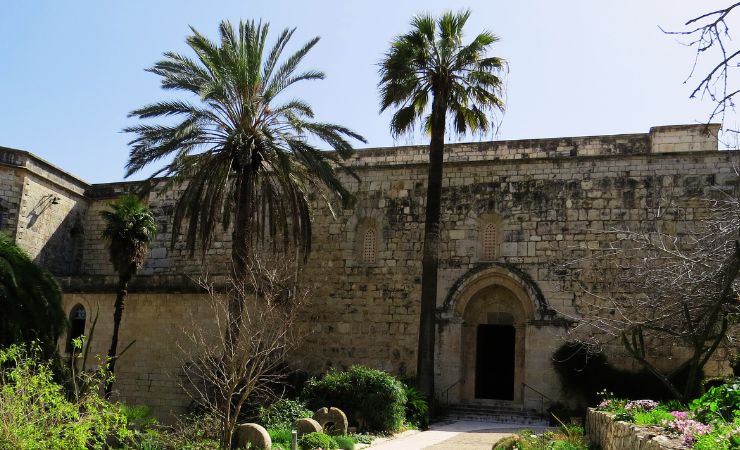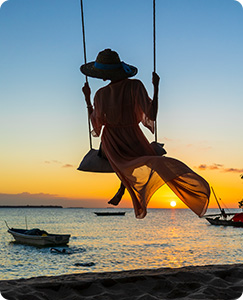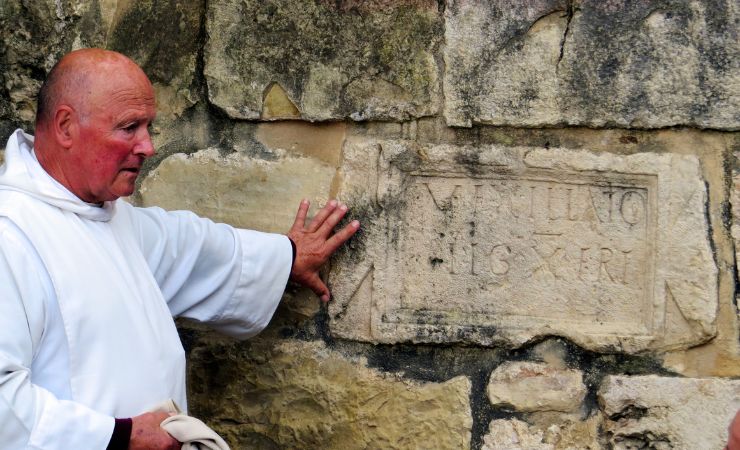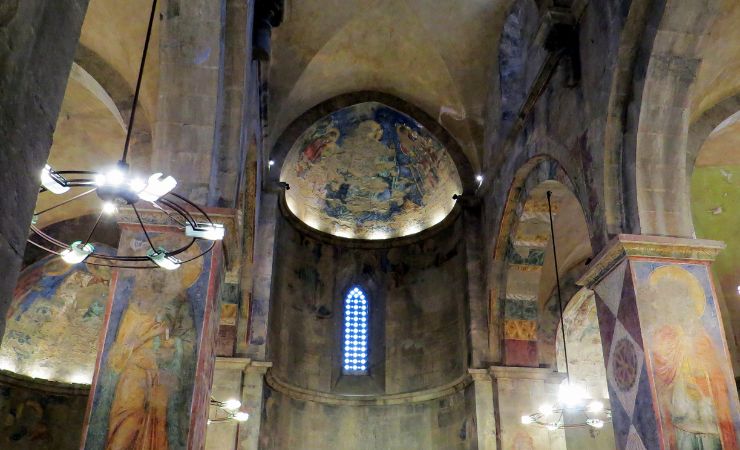The Breathtaking Church of the Resurrection (Cusader's Church), Abu Ghosh
The Church of the Resurrection in Abu Ghosh is a remarkable site with a stunning architectural and artistic heritage. Located near Jerusalem, this Crusader-era church, rich in 1000 year old frescos, offers a unique glimpse into the past, preserved through centuries of changing dominion.

Location
The church is situated in Abu Ghosh, about 10 kilometers west of Jerusalem. The village lies along the ancient road from the coast to Jerusalem on which is now the main highway that connects Tel Aviv with Jerusalem.
Biblical context
Traditionally associated with the biblical Emmaus, Abu Ghosh is believed to be the site where Jesus appeared to two of his disciples after his resurrection (Luke 24:13-35).
Now that same day two of them were going to a village called Emmaus, about seven miles from Jerusalem. They were talking with each other about everything that had happened. As they talked and discussed these things with each other, Jesus himself came up and walked along with them; but they were kept from recognizing him.



The Site's History
The history of the Church of the Resurrection is a tapestry of various eras:
- Roman Period: The site initially featured a Roman pool to collect water from a spring, constructed by the Tenth Legion stationed in the area. Inscriptions and artifacts from this period indicate a significant Roman presence including An inscribed milestone from 162 AD and Latin inscriptions documenting the Tenth Legion’s presence.
- Byzantine Period: A Byzantine church likely existed here before the Crusader church was built, serving the local Christian community.
- Crusader Period: Built in the 1140s by the Hospitallers, the church was designed in a transitional Romanesque-Early Gothic style. The structure included a basilica layout with three apses, a central nave, and side aisles, adorned with frescoes that have survived remarkably well (read more below).
- Muslim Period: Following Saladin’s victory in 1187, the church was abandoned and later repurposed as a barn. In the 14th century, a mosque was built adjacent to the site, reflecting the continued significance of the location through different periods.
- Modern Period: Purchased by the French state in the late 19th century, the church was restored by a French Benedictine order in 1901. This restoration revealed the beautiful frescoes and reestablished the church as a significant religious site.
The Structure of the Church of the Resurrection, Abu Ghosh
The Church of the Resurrection in Abu Ghosh is a well-preserved example of Crusader architecture, reflecting both Romanesque and Early Gothic styles. Its structural features and architectural elements provide insight into the craftsmanship and religious influences of the time.
Basilica Layout The church is designed in a basilica layout, a common architectural style during the Crusader period. This layout includes:
- Three Apses: The church features three apses, which are semicircular recesses typically at the eastern end of a church. Each apse serves a distinct liturgical function and houses specific frescoes related to Christian themes.
- Central Nave: The central nave is the main body of the church, flanked by side aisles. The nave is spacious and leads directly to the altar, emphasizing the church’s role as a place of worship and community gathering.
- Side Aisles: Two side aisles run parallel to the nave, providing additional space for congregants and processions.
Architectural Features
- Romanesque Style: The church’s architecture predominantly reflects the Romanesque style, characterized by its solid and heavy appearance, semi-circular arches, and thick walls. This style was typical of the Crusader period and aimed to convey a sense of strength and stability.
- Early Gothic Elements: Some features of the church hint at the transition to Gothic architecture, such as the pointed arches in certain sections. These elements suggest an evolution in architectural design during the period.
- Entrance: The main entrance is through a door built into the northern side aisle, leading visitors into the serene and elegantly designed interior.
Interior Design
- Columns and Capitals: The interior of the church is adorned with rows of small columns with leafed capitals. These columns support double arches in the nave, adding to the architectural beauty and structural integrity of the church.
- Frescoes: The walls and pillars of the church are decorated with frescoes, especially on the eastern side. These frescoes are of Byzantine workmanship and depict various religious scenes and figures, including the Dormition of the Mother of God, the Crucifixion, and scenes from the Last Judgment.
Crypt and Well
- Crypt: The church’s crypt is a significant feature, originally built as a Roman reservoir. The crypt is massive, with walls over 3.5 meters thick in some places. It houses a spring that still flows, providing a tangible link to the church’s ancient past.
- Well: The well in the crypt is a notable feature, dating back to Roman times. It continues to hold water, underscoring the site’s historical continuity and its importance as a source of life and sustenance through the ages.
External Features
- Fortress-like Appearance: The exterior of the church is robust and fortress-like, reflecting its historical role as a place of refuge and defense. This design is typical of many Crusader churches, built to withstand attacks and provide safety to the local community.
- Gardens: The church is surrounded by well-maintained gardens, adding to its serene and contemplative atmosphere. These gardens enhance the overall experience for visitors, offering a peaceful setting for reflection and prayer.

The Frescoes
The frescoes of the Church of the Resurrection are among its most remarkable features, dating back to the 12th century and offering a vivid glimpse into Crusader art and religious devotion. The frescoes include:
- Northern Wall: The Dormition of the Mother of God, depicting the Virgin Mary’s peaceful death and assumption.
- Eastern Wall: Three apses each with a specific scene related to the Last Judgment:
- Northern Apse: The Deesis, showing Christ flanked by the Virgin Mary and John the Baptist interceding on behalf of humanity.
- Central Apse: The Harrowing of Hell, depicting Christ’s descent into hell to save the righteous souls.
- Southern Apse: The Bosom of Abraham, symbolizing paradise and featuring the patriarchs.
- Southern Wall: The Crucifixion, depicting Jesus on the cross with the two thieves beside him.
- Additional Scenes: Other damaged frescoes include the Presentation of the Lord in the temple, the Adoration of the Magi, and the Annunciation to Zechariah.

Sources and Additional Information
Nearby Sites
- Notre-Dame de l’Arche d’Alliance: Another historic church in Abu Ghosh, known for its striking architecture and serene environment.
- Yad Kennedy: A memorial dedicated to John F. Kennedy with panoramic views of the surrounding hills.
- Ein Hemed National Park: A beautiful park with historical ruins and a peaceful stream.
- Kiryat Ye’arim: An ancient site believed to be the biblical town that housed the Ark of the Covenant.



